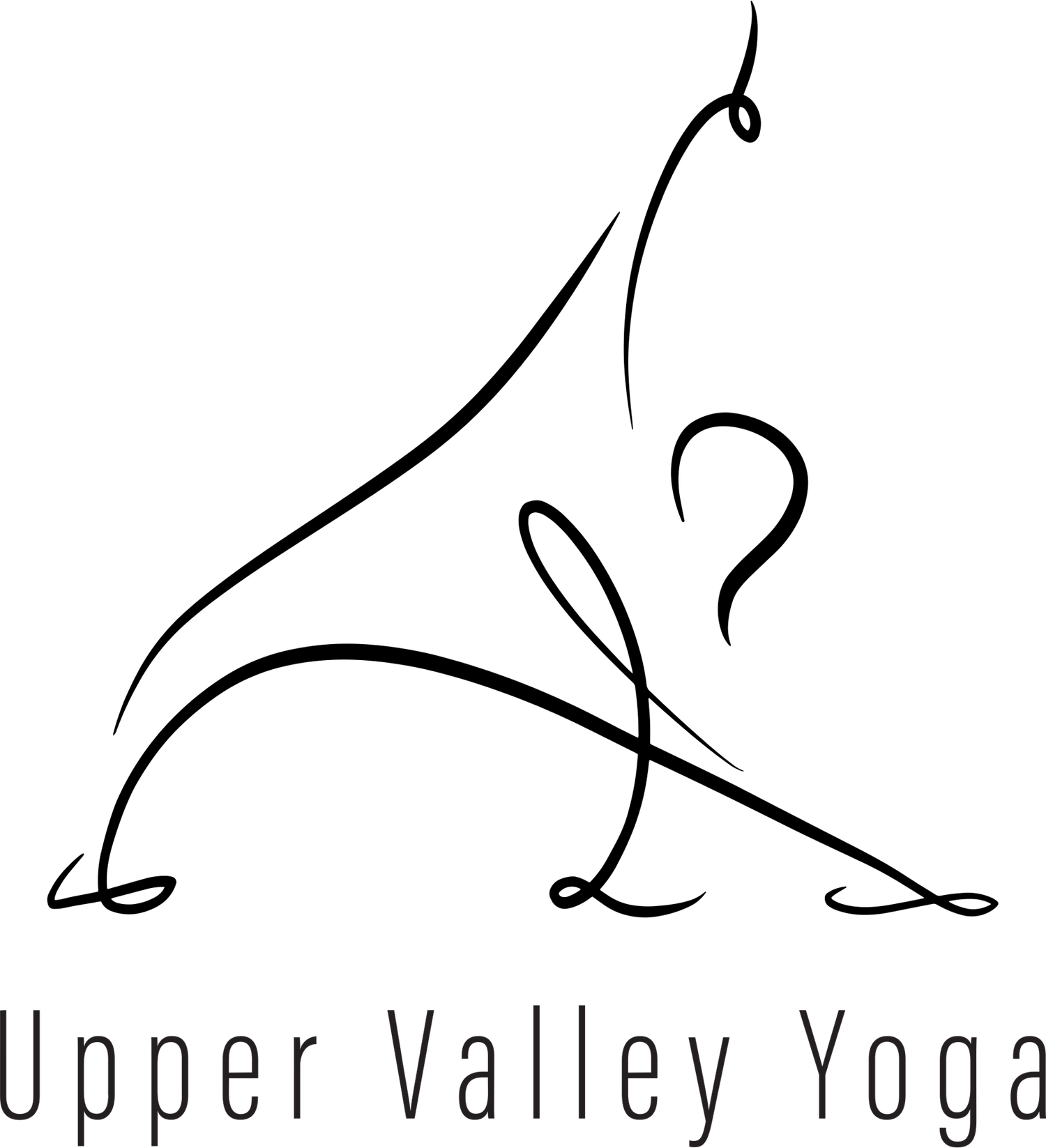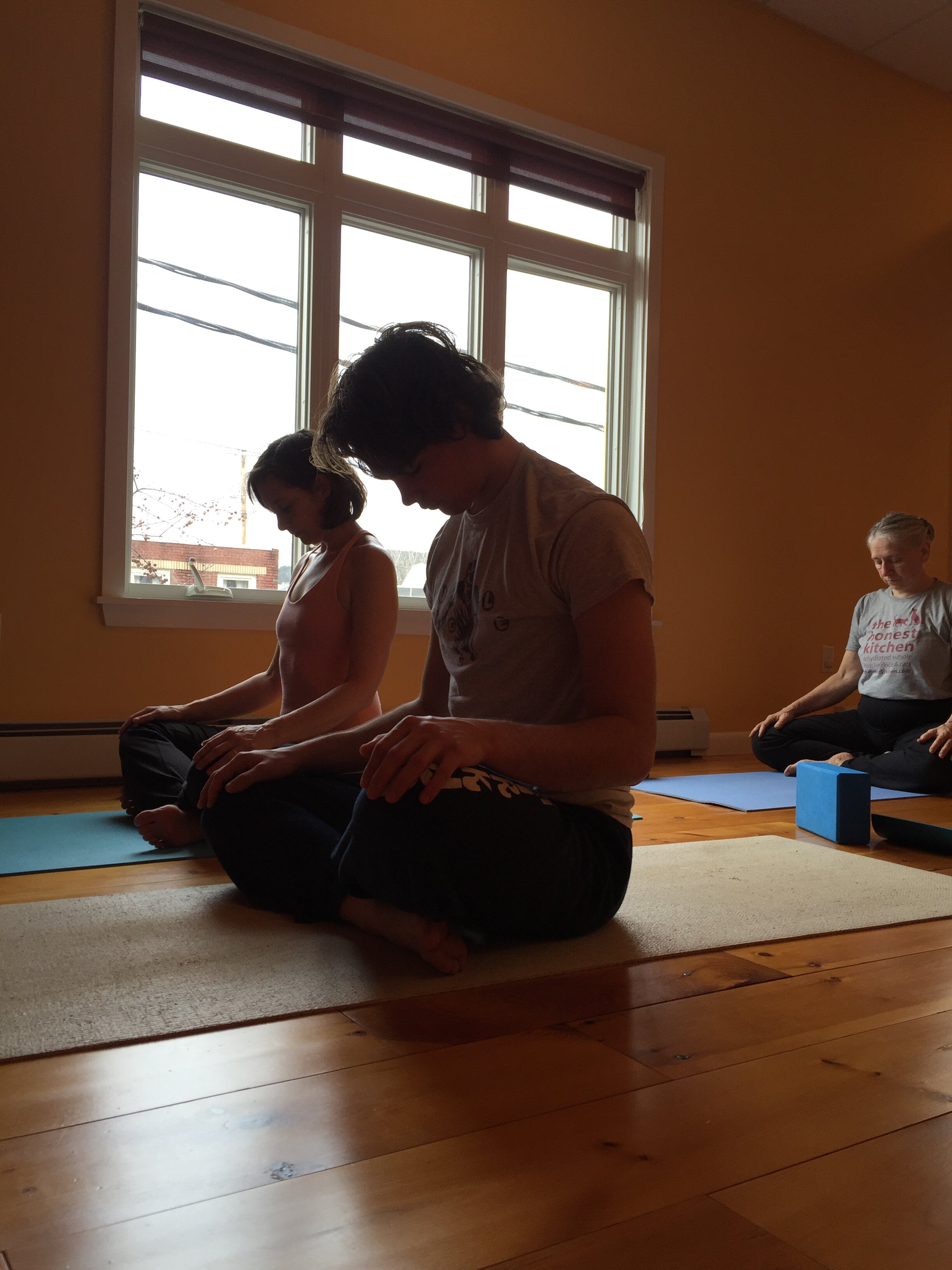Forward into 2016
I'm pretty sure I'm circulating the same thoughts about New Year'sresolutions that I did last year. At first glance, a resolution is aworthy endeavor. But it makes this sneaky transformation into somethingthat smacks of self loathing. a kind of: "do THIS because you're THAT"(I'm sure you can fill in this madlibs-like formula with your own choicewords and phrases). And that subtext of discontent seems to be at clearodds with yoga's concept of santosha, or deep contentment and acceptance with what is.
Almost every New Year’s resolution starts with the words: “I will.” Wesummon willpower and vow to change not just what we do but who we are.We set goals and imagine how happy we will be when we get what we want.
New Year's resolutions as we understand them almost always fail becausethey start from the assumption that who you are is not good enough, andreinforce the mistaken belief that your happiness depends on makingyourself different or acquiring something you want.
The yogic practice of sankalpa, or resolve, is a kinderalternative to the tired battles of failed self-improvement thatresolutions prompt in us and it is inclusive of the concept ofsantosha. A sankalpa practice starts from the premise that you alreadyare who you need to be to fulfill your life’s dharma. All you need to do is focus your mind, connect to your most heartfelt desires, and channel the energy within.
Sankalpa is a vow and commitment we make to support our highest truth.Rod Stryker says “By definition, a sankalpa should honor the deepermeaning of our life. A sankalpa speaks to the larger arc of our lives,our dharma—our overriding purpose for being here.” The sankalpa becomes astatement you can call upon to remind you of your true nature and guideyour choices.
A sankalpa isn’t a petition but a statement of deeply held fact, and avow that is true in the present moment. It is first, a heartfelt desireor what Jennifer Reiss calls "the heart's true longing." It's astatement that reflects your true nature, an "I am" statement.Underneath your intention or goal is the second part, but it shouldalign with the first partt and with that deep sense of who you alreadyare. How do you do this first part then? I see it as a deep listeningthat brings forth the feelings, thoughts and ultimately words thatcreate your sankalpa. And to ask yourself "what do I really want?"requires that you sit with what arises, look beneath the surface, andtake time to really listen. Both the heartfelt desire and the specificintention should be stated in the present tense. For example, ratherthan saying, “I want to (Or "I will") be more compassionate,” yoursankalpa might be, “Compassion is my true nature” or “I am compassionitself.” Stating your sankalpa in present tense acknowledges thetremendous will, energy, and truth that arrive with the discovery ofyour heartfelt desire. It also reminds you that whatever is required ofyou is already within you.
What might this look like?
Set aside some quiet time to contemplate how you would like to feelduring the coming year. Is there any way you can reframeresults-oriented resolutions into something that will make this year’sjourney more joyful and realistic? Create a short sentence for yoursankalpa. Let your language reflect an openness to what may come, asopposed to fear about what may come.
When you stray from the essence of your sankalpa, don’t beat yourselfup. What's the point? Change doesn't happen overnight. Be firm in yourresolve but gentle in the way you remind yourself. Daily gentlereminders are useful: Use it as a mantra during yoga practice, post iton your computer, phone, or mirror; or simply say it to yourself quietlybefore going to sleep.

